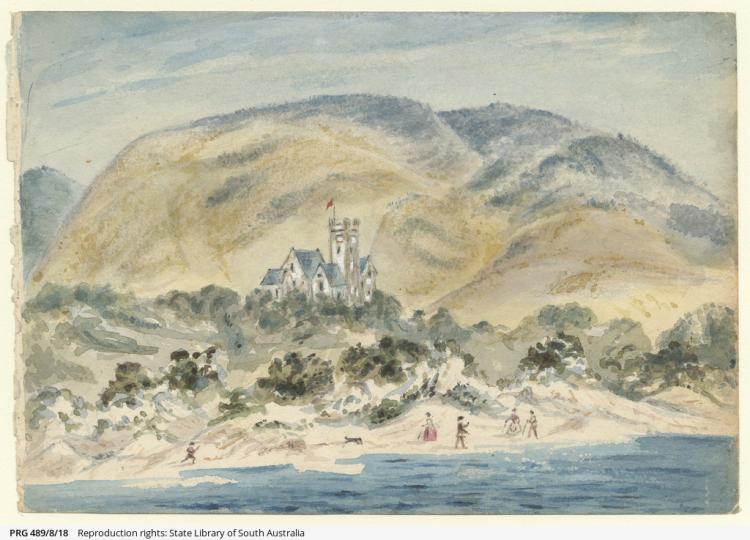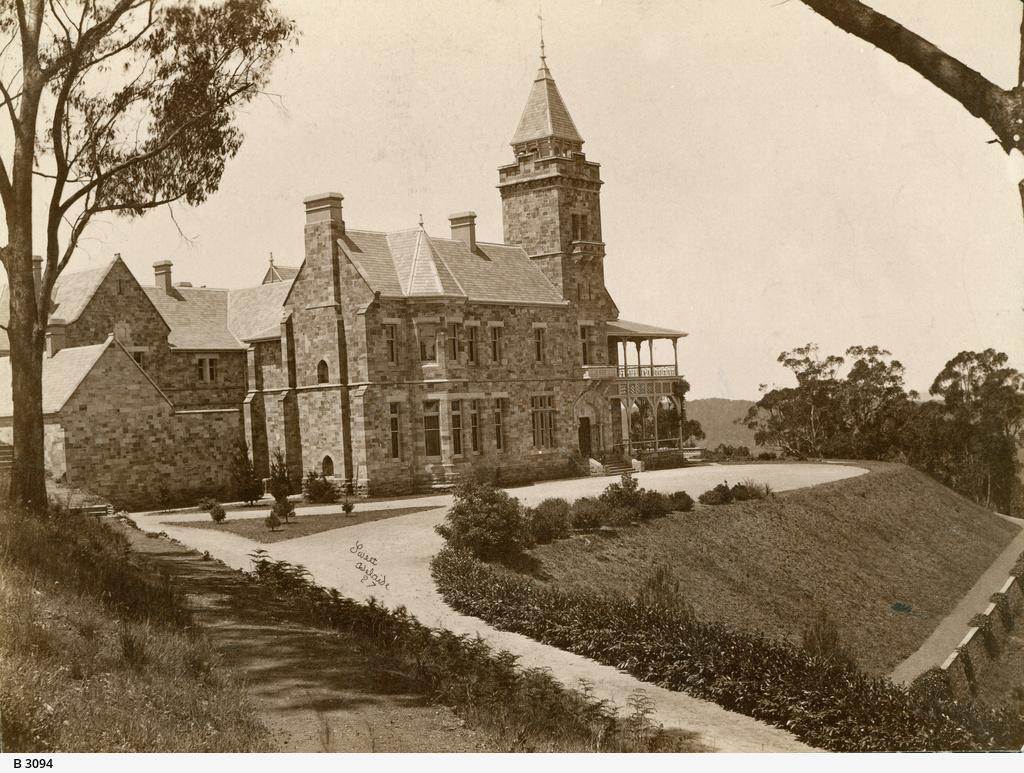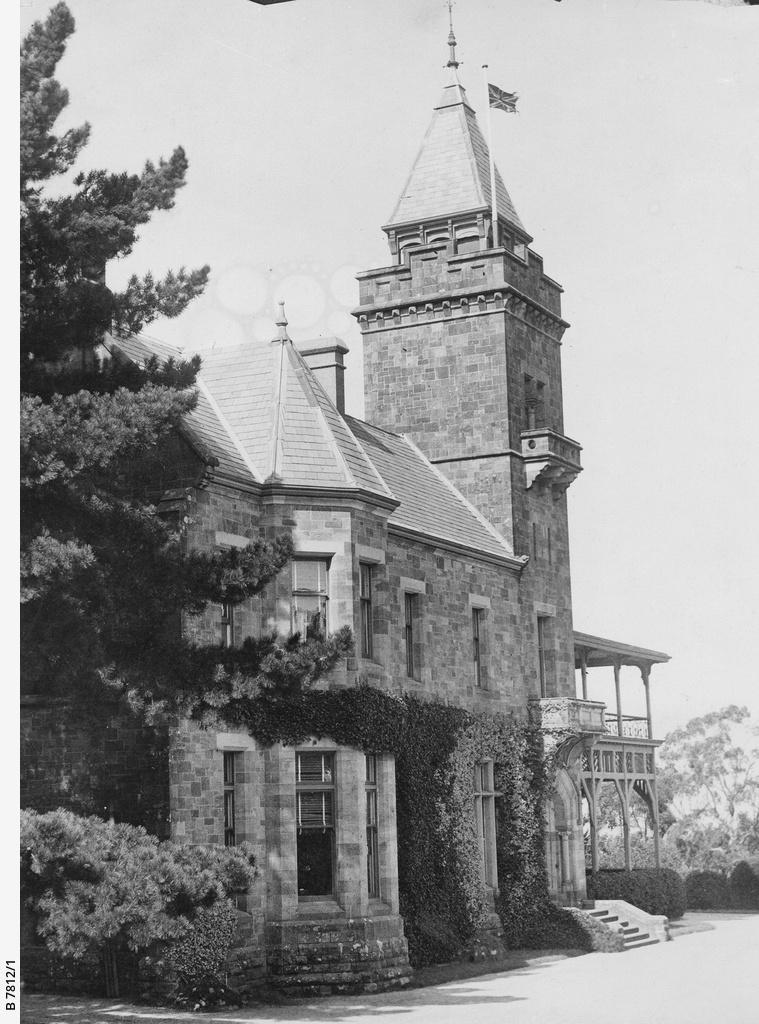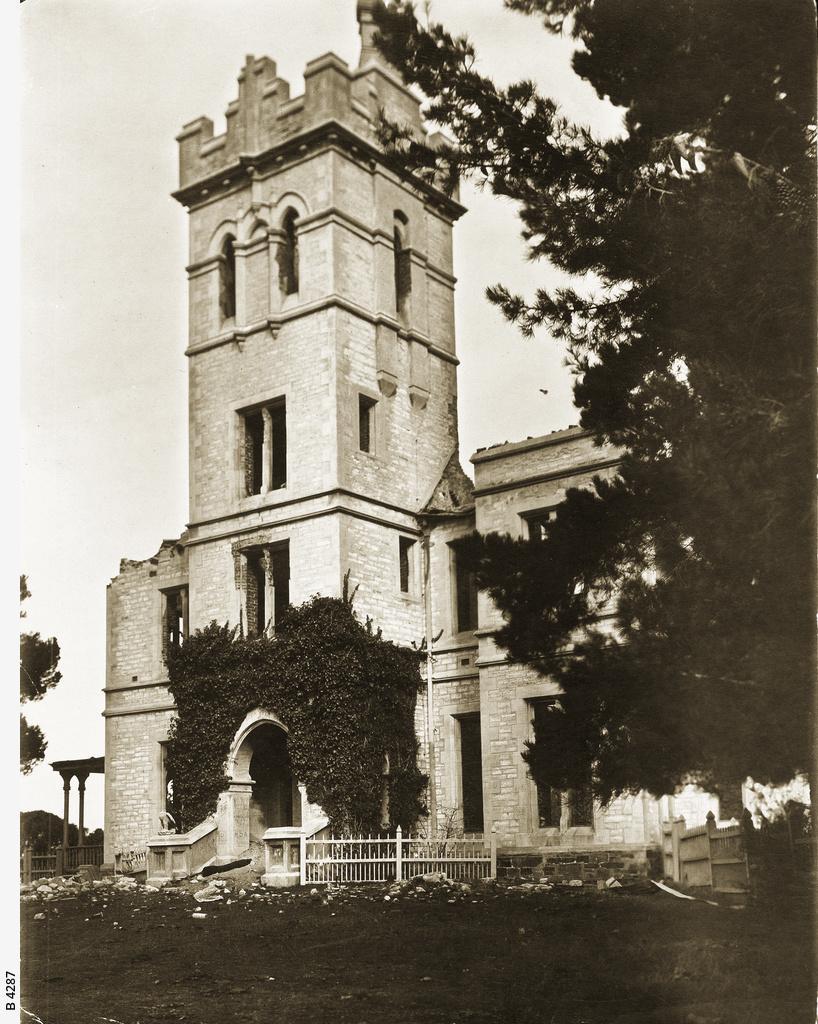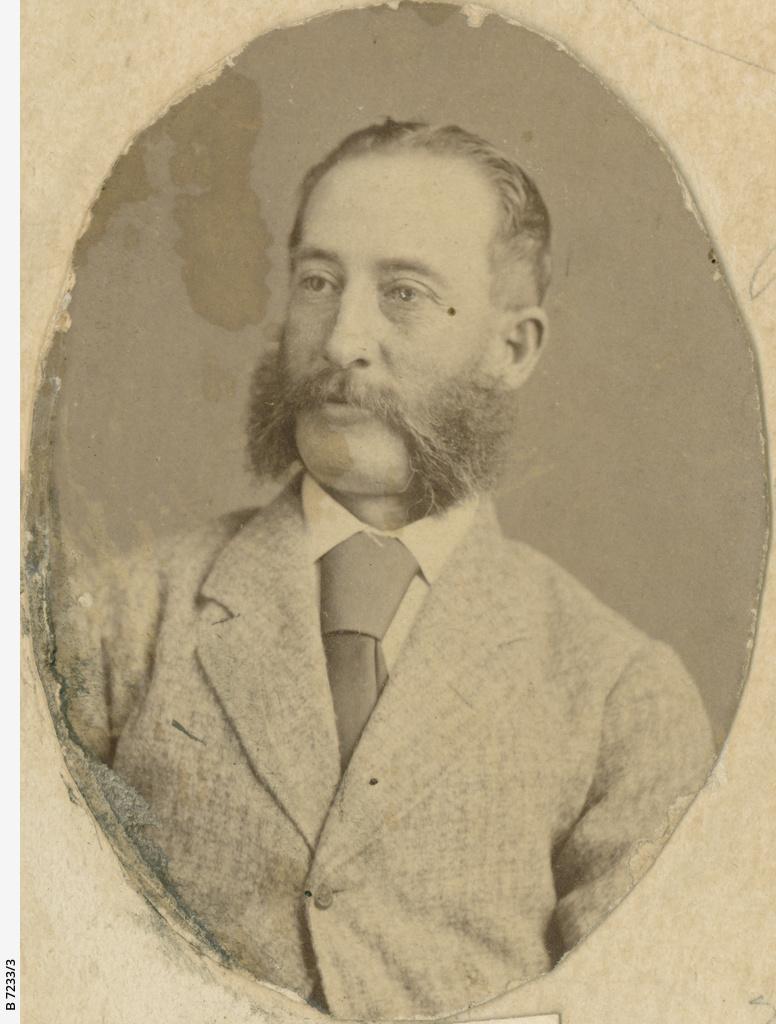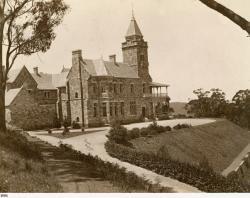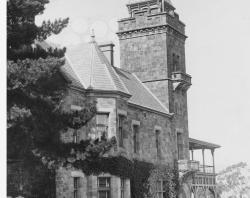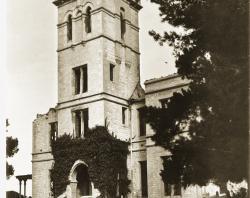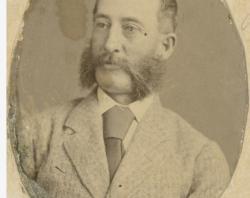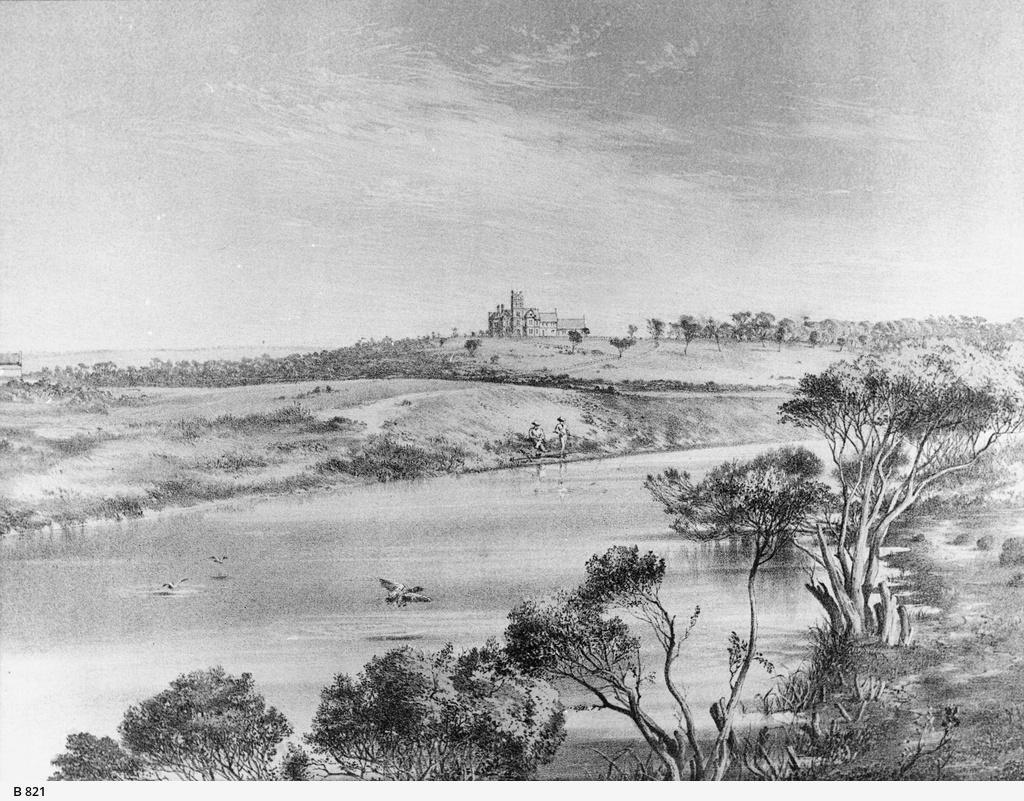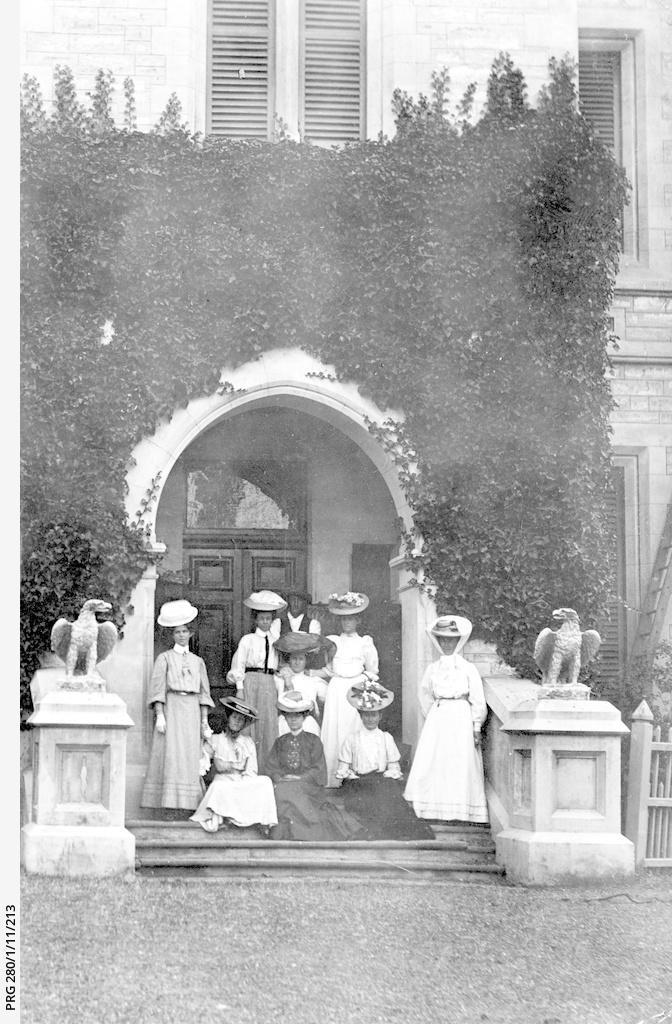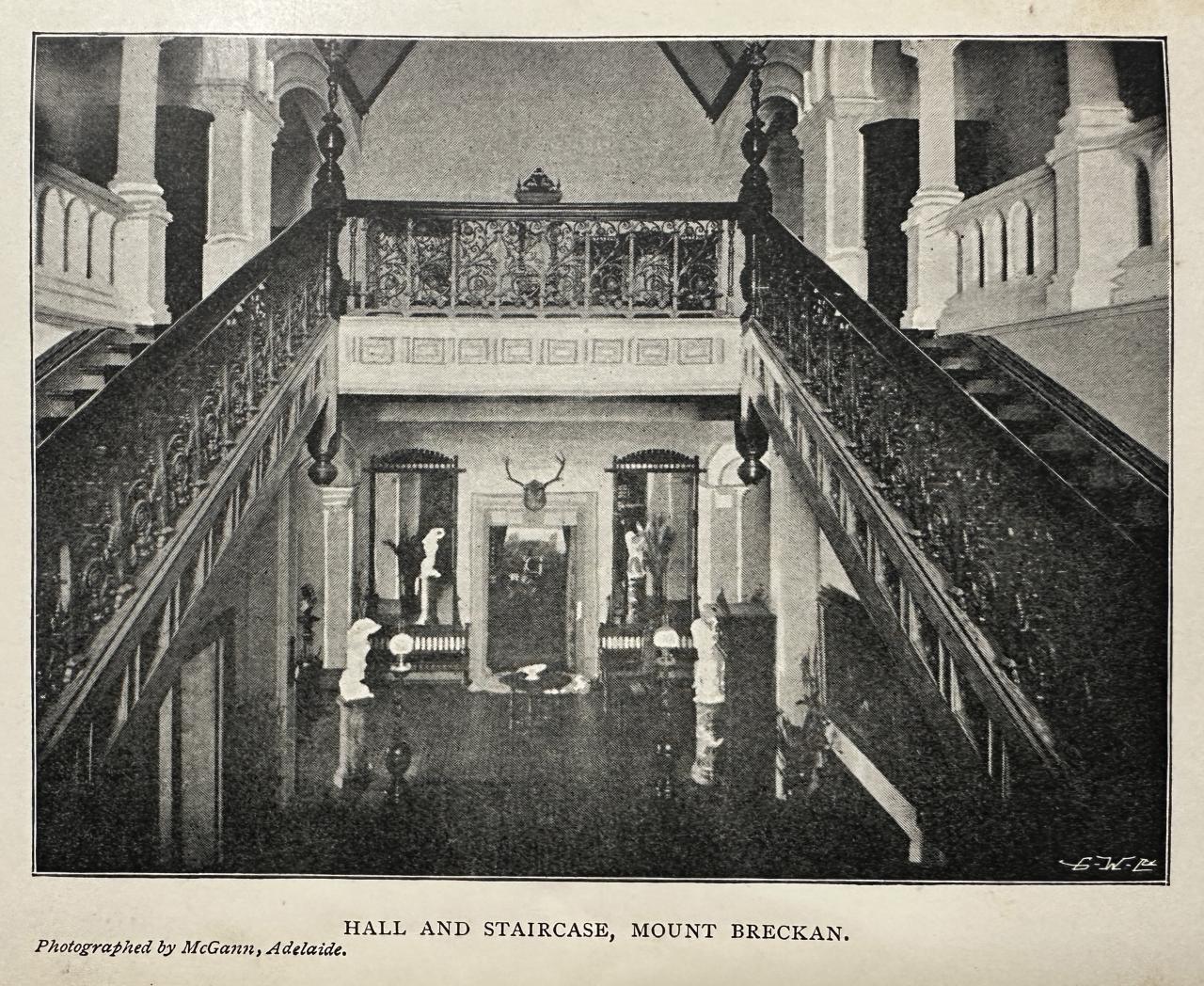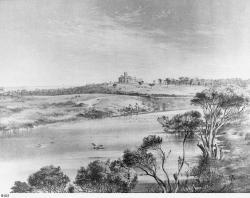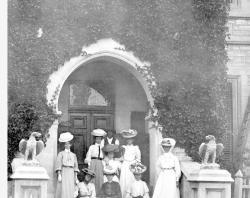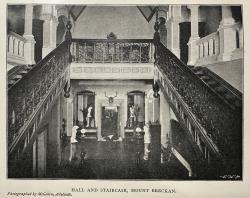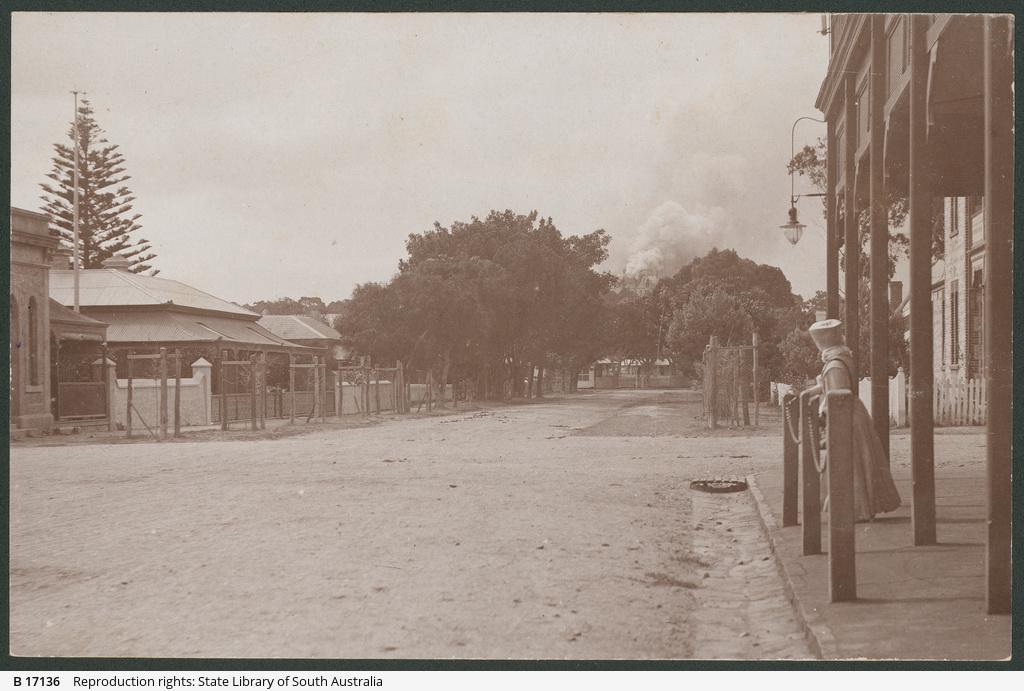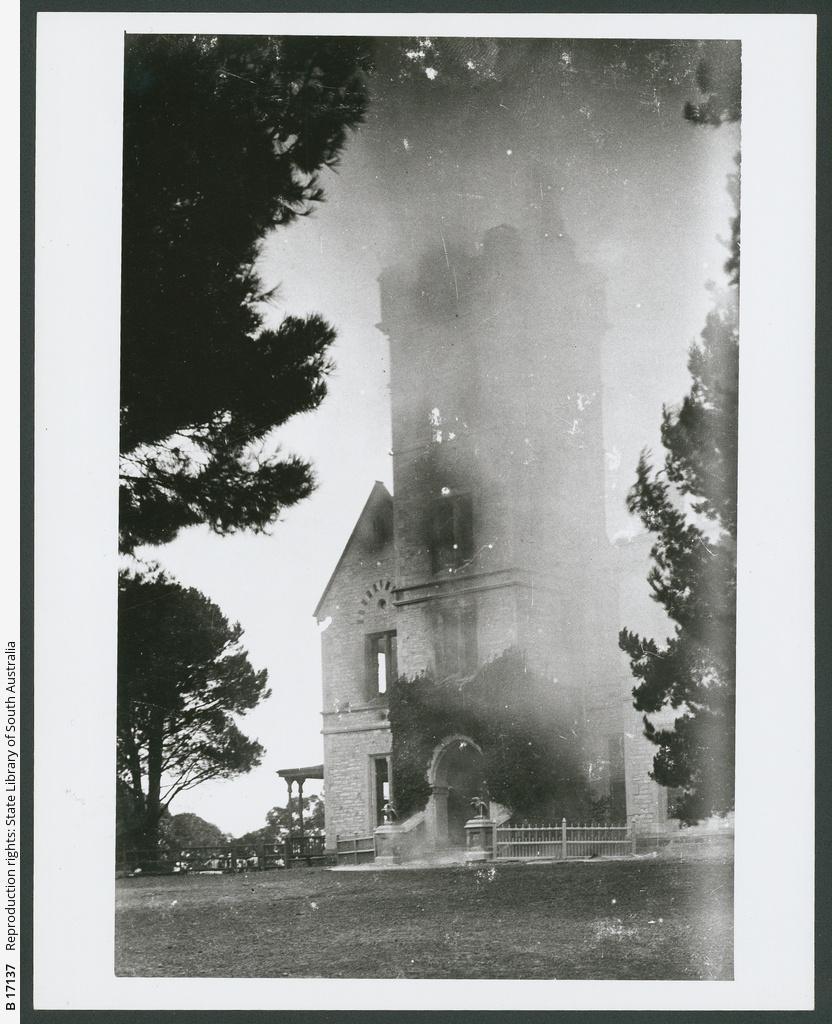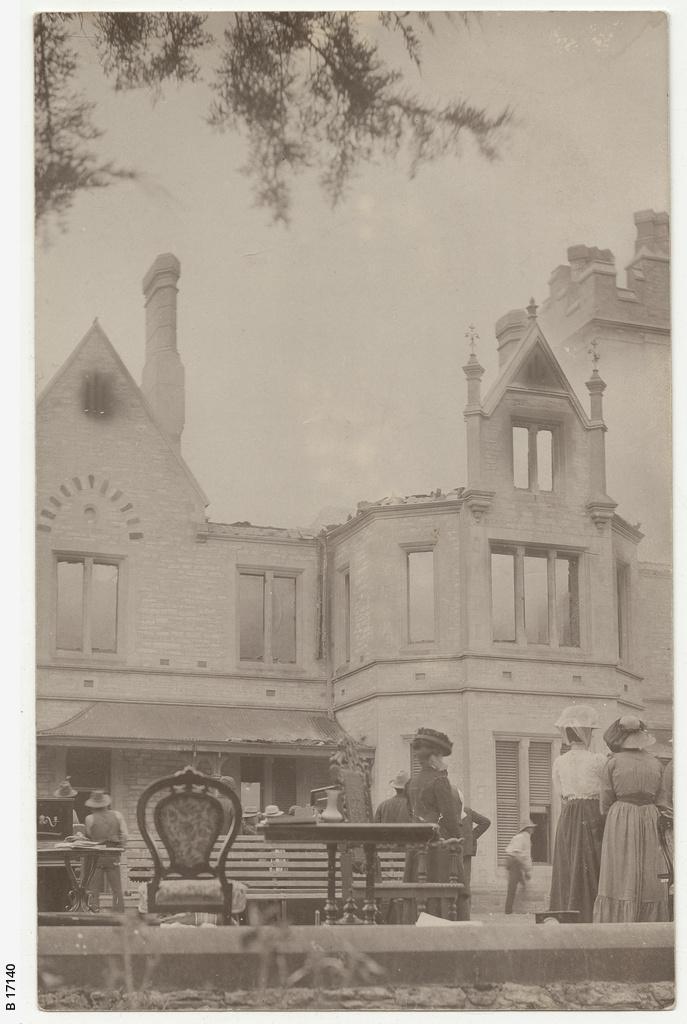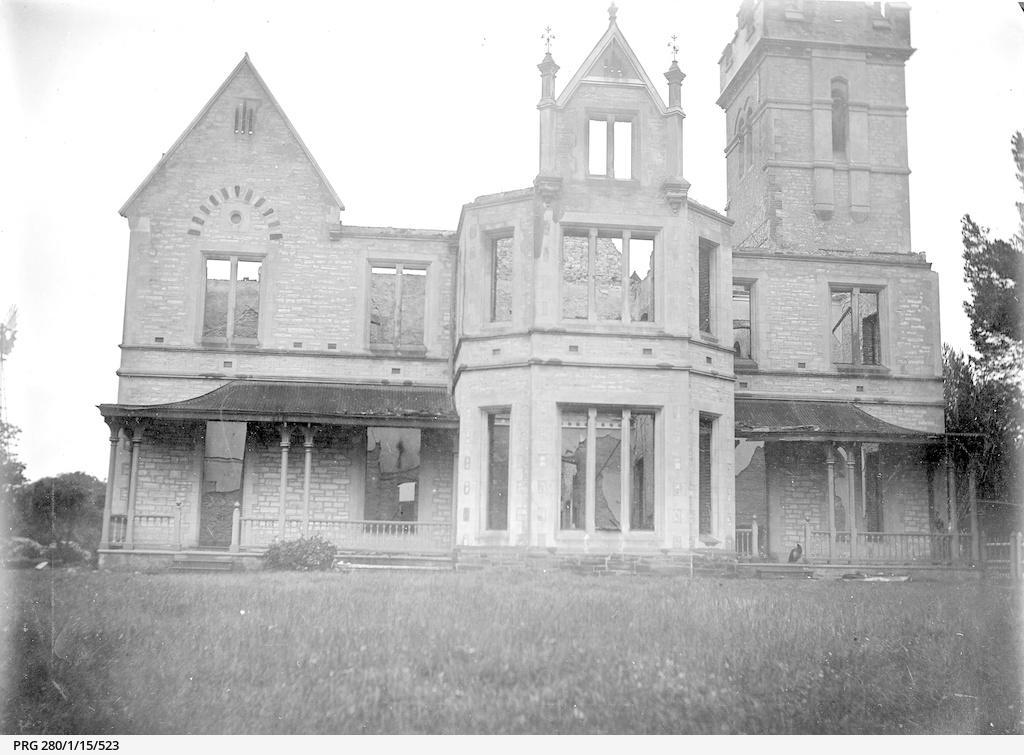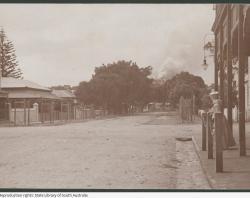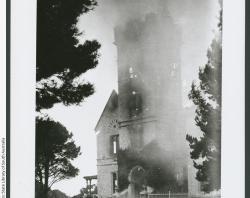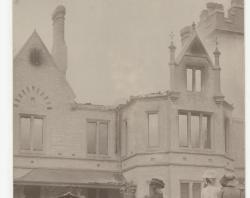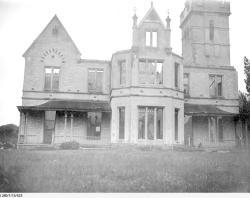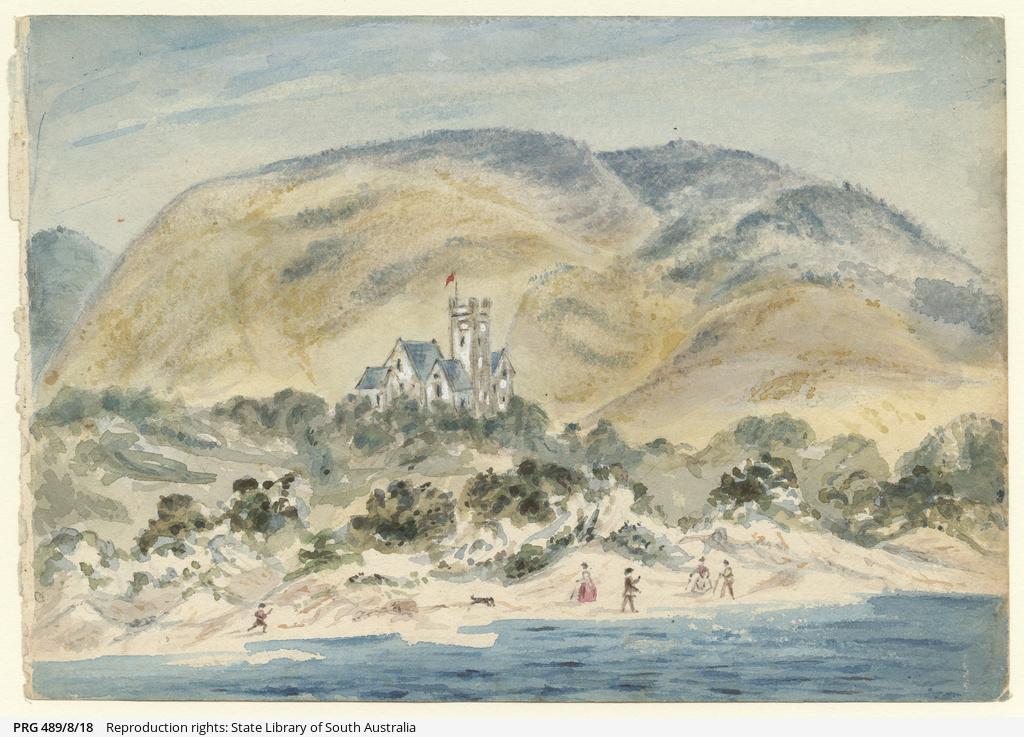
Mount Breckan – from the beginning
A gift for Alexander Hay’s second wife, Agnes Grant (Gosse) Hay
Mount Breckan becomes a home
The new residence was built of Encounter Bay limestone in the style of a Gothic revival ‘castle’ with an 80-foot tower, 22 rooms, extensive gardens, a boating lake and a caretaker’s lodge. In April 1878 the foundations were laid.
The ‘house’ was completed in the summer of 1879/80 and named ‘Mount Breckan’, using the Scottish spelling of bracken. It was filled with expensive furnishings, many purchased from the 1880 Melbourne International Exhibition. No expense was spared. The mantelpieces alone, some of marble, cost almost one thousand pounds.
The family used Mount Breckan as a summer retreat from the heat of the city. A boat shed was built on the banks of the Hindmarsh River for the family’s use and a changing shed on the beach – strictly for men only. Alexander soon had four young children, as well an adult son and three daughters from his first marriage.
When the Hays were not in residence, the large property was looked after by John and Hannah Sandercock who lived in the lodge, beside the entrance to the long driveway leading to the main building. Some years later, Mr and Mrs Albert Henderson became caretakers.
A society hostess
Agnes Hay blossomed as a society hostess. She had grown up in Adelaide society and loved to entertain. As the mistress of 'Linden', the family home in Adelaide, Agnes Hay became renowned for her dinner and garden parties. Her guest list included Lord Hopetoun, Governor of Victoria; South Australian Premier, Sir Henry Ayers; pioneer pastoralists and businessmen Daniel Cudmore and Simpson Newland, and many other prominent South Australians. Many of these also visited the Port Victor retreat, including Chief Justice Samuel Way who kept a diary describing summers spent at Mount Breckan (SLSA: PRG 30).
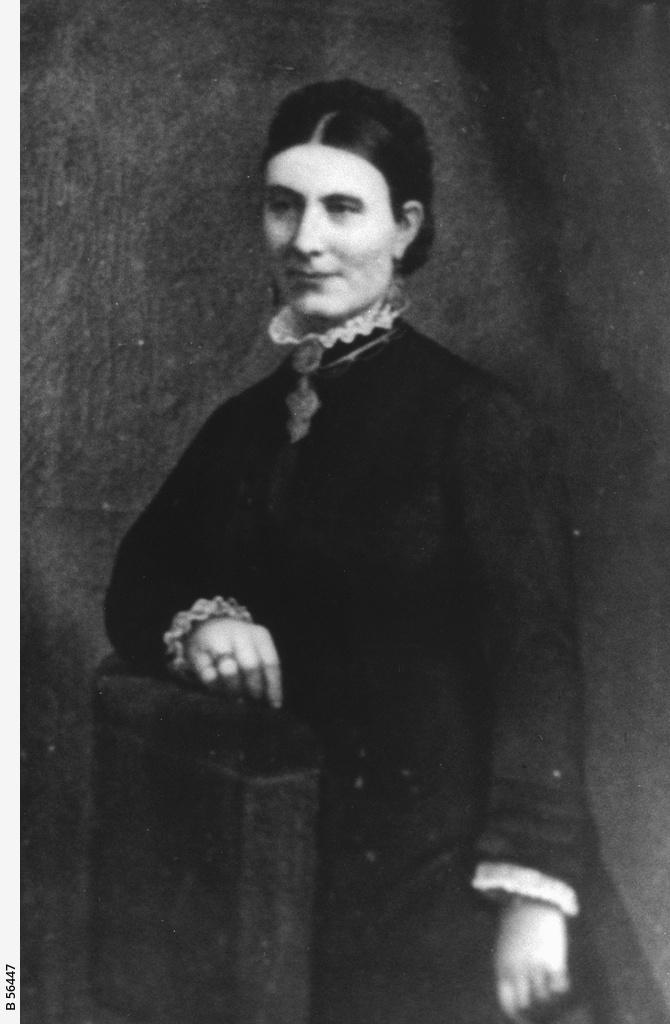
Mrs Hay was well-known for her extensive wardrobe made by the dressmakers of Adelaide.
‘Mrs Alexander Hay has a wonderful green satin gown just now … which cost a mint of money and takes everybody’s breath away.’ ~ Robert Barr Smith, 1882 (SLSA: PRG 354)
Others in Adelaide society, such as Lady Todd, thought Agnes Hay frivolous and disapproved of her dance parties. (Todd letters, SLSA: PRG 630/6)
Alexander Hay dies
In 1898, during a heat wave, Alexander Hay died of heart failure at Mount Breckan, and in the introduction to her memoir of her husband, she wrote:
‘On February 4, 1898, I lost the friend who was unspeakably near to me – the beloved and honoured companion of my life during twenty-six happy years … He died at the advanced age of seventy-eight, leaving me – though many years younger – paralyzed and prostrate, bereft of the strong staff that had been my support’. ~ Agnes Grant Hay
Travels and writing
Soon after Alexander’s death, Agnes and her two daughters sailed to London where youngest son, William Hay, was studying law at Trinity College, Cambridge. In England she wrote and published Footprints : a memoir of the late Alexander Hay, one of the fathers and early colonists of South Australia.
Travel articles soon followed for the Advertiser newspaper and its weekly edition, the Chronicle. The editor, John Langdon Bonython, wrote,
‘She has distinctly the literary gift’. ~ John Langdon Bonython, editor SLSA: PRG 979
Mrs Hay continued to write books – memoirs, as well as novels with religious themes. Agnes travelled often between London and Adelaide, staying at Mount Breckan when she was in South Australia. In all, she made 18 sea voyages between Adelaide and London, first by sailing ship and later by steamer. Although Mrs Hay loved England, she did not settle there and frequently returned to South Australia. She was a grandmother by this time and keen to spend time with her her young grandsons, William's children.
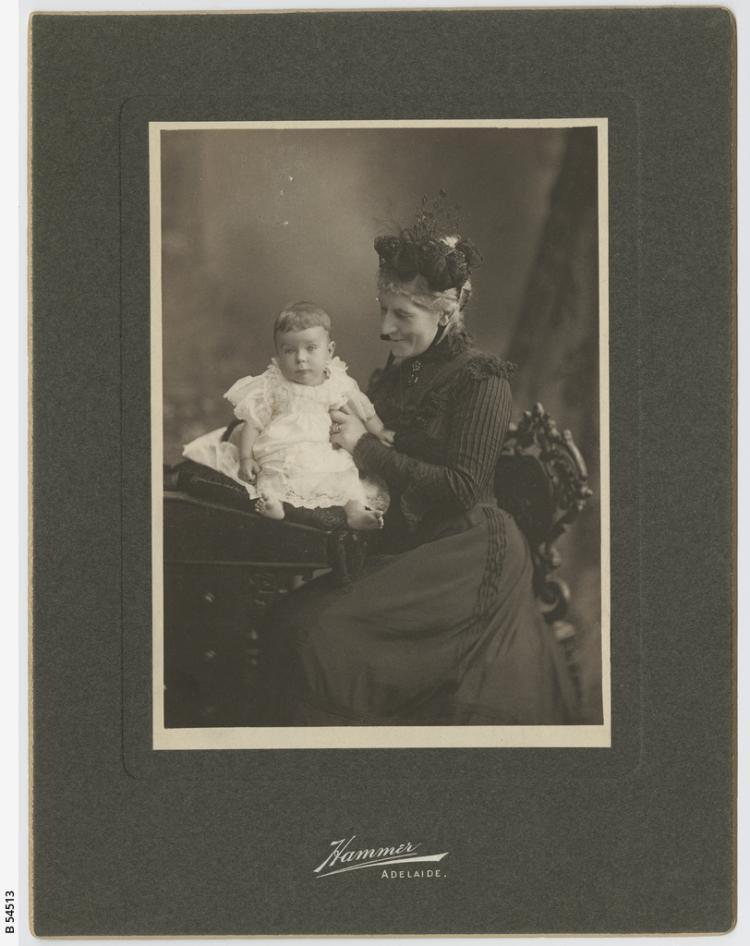
Except for a brief visit from Alexander Hay Jr. in 1900, Mount Breckan was mostly empty for several years. Then young William Hay returned from studying in the UK, back for the first time since his father's death. He had decided to become an author and began working on a story based on his return home. It was set in Port Victor, using false names for the characters, but the book was never completed. Instead, he married, settled down, and began a new writing project. In 1902 he moved to Beaumont, and later to Hindmarsh Valley, where he remained until his death in 1945.
Mount Breckan burns
Agnes was allowed the use of the Hay residence at Port Victor but she was never there for very long, constantly travelling. However, in 1905 she did remain at Mount Breckan long enough to write her anonymously published autobiography After-glow memories after which she resumed her travels.
In late 1908, Agnes and her youngest daughter, Helen, whose nickname was 'Dolly', returned to Adelaide from London. They had travelled aboard the SS Waratah, a luxurious passenger and cargo-carrying liner, on her maiden voyage. The pair spent Christmas at Mount Breckan. Agnes and Dolly had not intended to stay long in Adelaide. However, in the February after Christmas, the tank in the roof above one of the bathrooms needed repair. (Water for the house was pumped in from two huge underground tanks.) The plumber was using highly inflammable liquid tar which was accidently set alight by a hurricane lamp. It flared up and fire instantly took hold in the roof.
Agnes had been lying down in her room when the house caught fire. A maid told Agnes, 'The house is on fire.' to which she responded 'Well put it out!' Her employee Albert Henderson then had to convince Agnes that she must leave.
It was too late to prevent the fire from spreading but due to Albert's timely intervention, Agnes managed to escape. Her daughter Dolly also escaped injury as she was visiting in Victor when she was informed that the family property was on fire. Within a few hours, only the walls of Mount Breckan were left. Locals helped save nearly all the furniture in the ground floor rooms – including a grand piano, billiard table and valuable paintings although many of the books in the library and the Italian marble statues were destroyed.
Among those who had come up from the town where he lived with his wife and children, was remittance man John Lawes-Wittewronge, eldest son of an English baronet. He was the only person to run upstairs as the fire took hold. He threw some of Agnes's expensive gowns from her bedroom window. A box of gold sovereigns were never found, and amongst other possessions, Dolly’s prized valuable furs were destroyed.
A faulty insurance policy
Mrs Hay's problems had only just begun, for now the executors of her husband's estate, on submitting a claim, discovered that through a fault of the insurance agent, the policy was null and void. The building had been insured for eight thousand pounds, the furnishings for two thousand, and the paintings and statuary for one thousand, three hundred and eight pounds.
The insurance company finally agreed to pay a smaller figure which, after much wrangling, they did a year later. This was probably not aided by the late Mr Hay's extremely long and complicated will, which was not finally settled until the death of his last child in 1952.
While the complex fire insurance claim for Mt Breckan was being settled, Agnes and her daughter decided to return to London, where another daughter, Gertrude, was expecting a baby. The Hays booked first-class berths on the SS Waratah. On 7 July 1909, mother and daughter left Port Adelaide for England. They never saw Mount Breckan again – read this story to find out why.
Related story
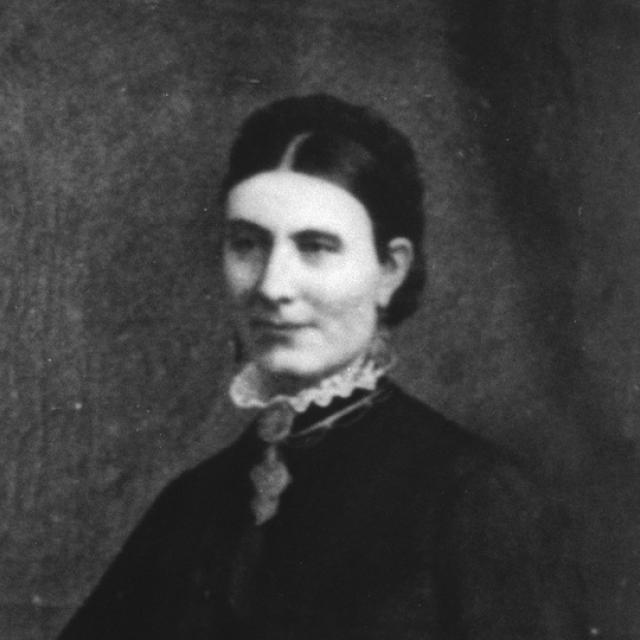
Love in the stacks: After-glow memories
The State Library, in both its published and its archival collections, holds memories of countless love stories and romances of the past. Buried within letters, diaries and published memoirs are the loves – and lost loves – of many South Australians...
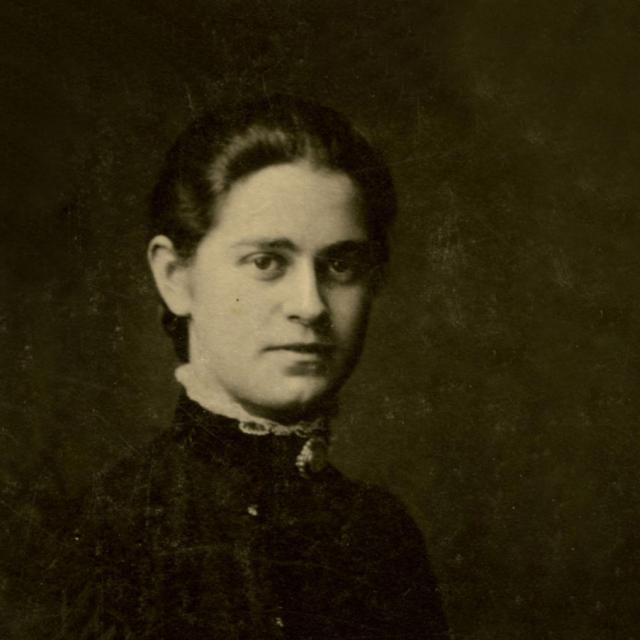
The young lady who left home in 1877
Sleuthing at the State Library using newspaper clippings, three books, inscriptions, newspaper archives, and censuses, pieces together the intriguing story of a run-away in 1877...
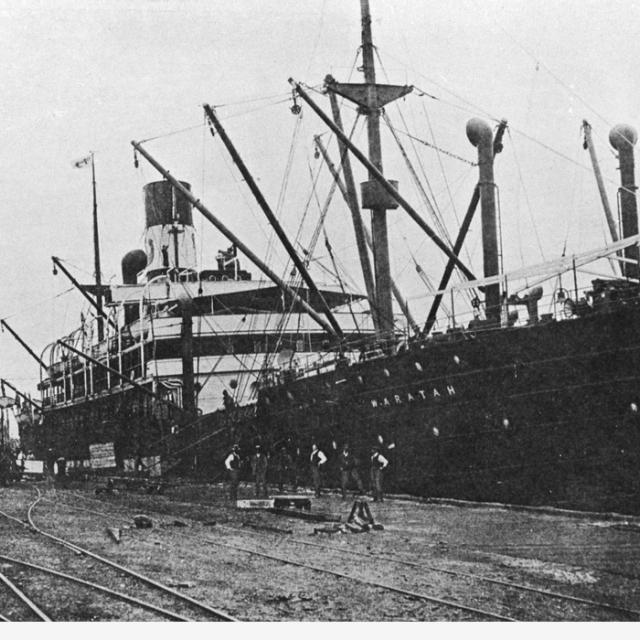
The sinking ship SS Waratah - ‘Australia’s Titanic'
The fate of the SS Waratah remains one of the great unsolved mysteries of the sea...

A man of many hats: Alexander Hay
Alexander Hay was a merchant, farmer, pastoralist, newspaper proprietor (South Australian Register) and Member of Parliament, in both the upper and lower houses.
More to explore
‘Mount Breckan – from the beginning’ Victor Harbour Times, Wednesday 14 October 1981, page 25. NLA: Trove
Alexander Hay - Australian Dictionary of Biography Online
Footprints: a memoir of the late Alexander Hay, one of the fathers and early colonists of South Australia by Agnes Grant Hay
The Hays of Mt Breckan, 1982, by Anthony Laube
A lady at sea: the adventures of Agnes Grant Hay, 2001, by Anthony Laube
Private journal of a voyage to Australia 1838-39 by James Bell. edited by Richard Walsh, with an introduction and epilogue by Anthony Laube
